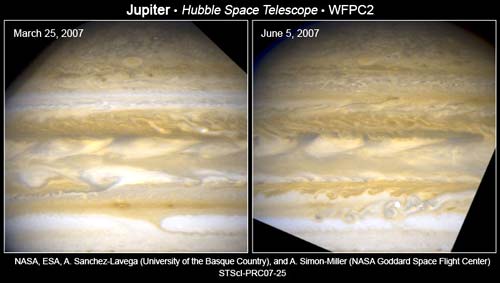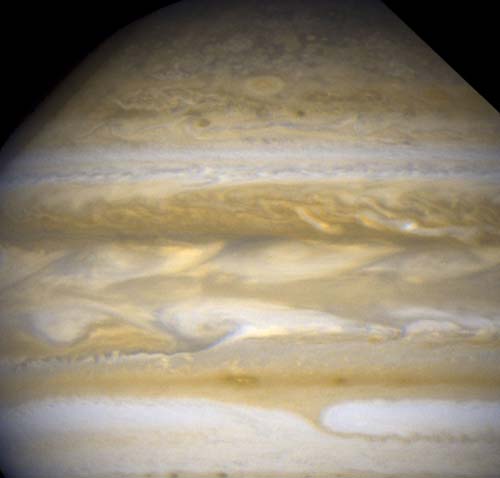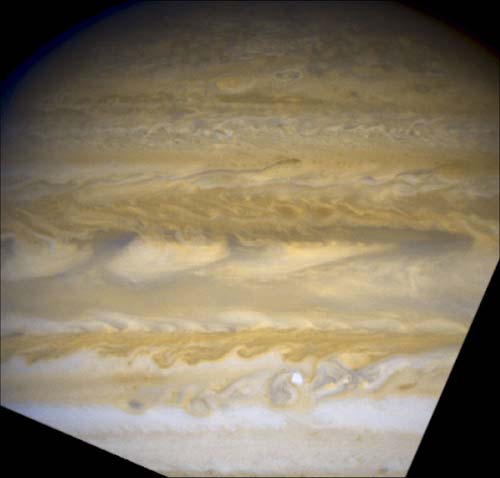Atmospheric movements on Jupiter
The Hubble telescope was obtained in a short time of atmospheric movements on Jupiter. From March 25 to June 5, the clouds near the equator on the planet have changed color and shape.
Bright colored stripes have become darker, while darker stripes are brighter, creating a new face of this giant solar system.
In Jupiter's atmosphere there are horizontal stripes with different colors. The bright areas created by hot matter fly back up, while the dark rings are cold matter flying down. The meeting between these two atmospheres creates chaotic movements.
Below the equator, the shark fin structure is replaced by a small swirling band. These changes are very common on Jupiter, but this is the first time the Hubble telescope provides an accurate picture.

Hubble photos show a white cloud band (left photo)
above altitude has turned brown (right photo) - (Photo: NASA)

Jupiter, March 25, 2007 (Photo: NASA)

Jupiter, 05/062007 (Photo: NASA)
Power
- Overview of Jupiter
- For the first time, humans can discover Jupiter's deepest mystery
- The Juno probe sends the first image of Jupiter to Earth
- What happens if Jupiter doesn't exist?
- Tonight is the best time to see Jupiter
- Jupiter and Saturn will shine beautifully in the sky from today
- Jupiter once swallowed 10 times the planet Earth
- A series of wonderful images of Jupiter are sent from the Juno-NASA ship
- The ancient Babylonians used the tracking geometry of Jupiter
- Photographs of Jupiter's surface look exactly like a water-picture
- The amazing thing that NASA's Juno spacecraft has just made
- Discover 10 more microscopic satellites orbiting Jupiter
 Van Allen's belt and evidence that the Apollo 11 mission to the Moon was myth
Van Allen's belt and evidence that the Apollo 11 mission to the Moon was myth The levels of civilization in the universe (Kardashev scale)
The levels of civilization in the universe (Kardashev scale) Today Mars, the sun and the Earth are aligned
Today Mars, the sun and the Earth are aligned The Amazon owner announced a secret plan to build a space base for thousands of people
The Amazon owner announced a secret plan to build a space base for thousands of people Photos capture Shanghai's golden age, every frame is as beautiful as a movie
Photos capture Shanghai's golden age, every frame is as beautiful as a movie  Revealing a series of rare photos recording little-known things in history
Revealing a series of rare photos recording little-known things in history  Top 9 Gods in 'Greek Mythology'
Top 9 Gods in 'Greek Mythology'  Photographs of Chinese Women 150 Years Ago
Photographs of Chinese Women 150 Years Ago  Leaked photos of Leonardo da Vinci and Mona Lisa, experts join in to find surprising clues
Leaked photos of Leonardo da Vinci and Mona Lisa, experts join in to find surprising clues  Birds that don't look at each other win prestigious European nature photo award
Birds that don't look at each other win prestigious European nature photo award 